Here it is a basic list of the types of necklines that you can find in our selection of flamenca dresses in Flamencoexport. In order to find the one that would suit you the best, you would need, in the first place, to have your body type in mind and also your personal taste. However, all of them are beautiful with great quality, and can be perfectly combined with all sorts of accesories to make them brighter, more cheerful and elegant.
1. V-NECK
Classic design in v-neck. It can be combined for example with a shawl over the back and shoulders in different positions.
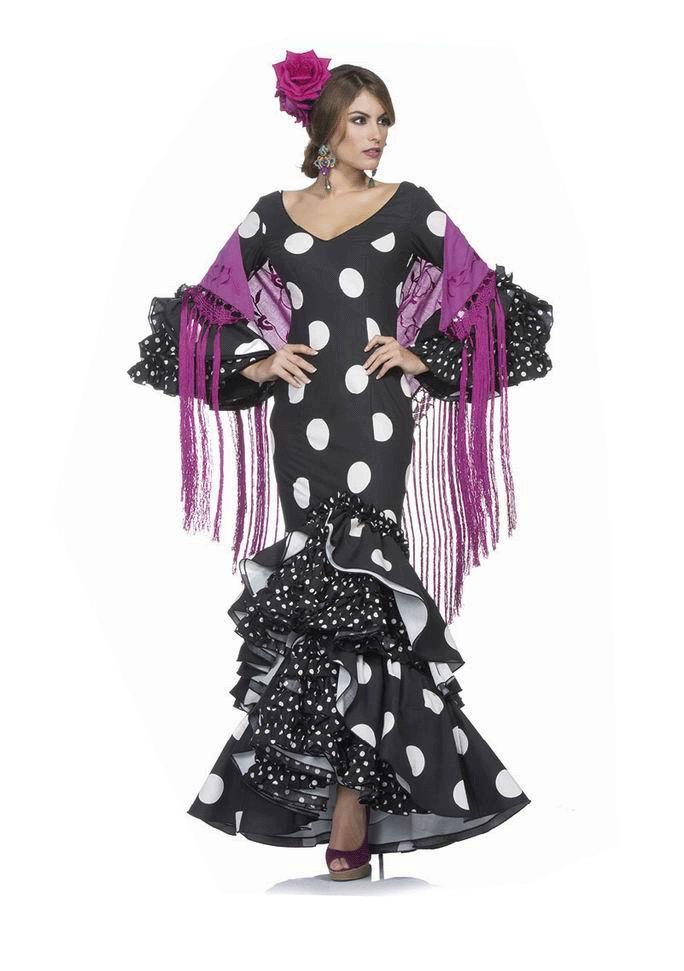
Flamenca dress Madruga Model, 2017-2018 collection.
2. ROUNDED NECKLINE
Traditional rounded neckline dresses.
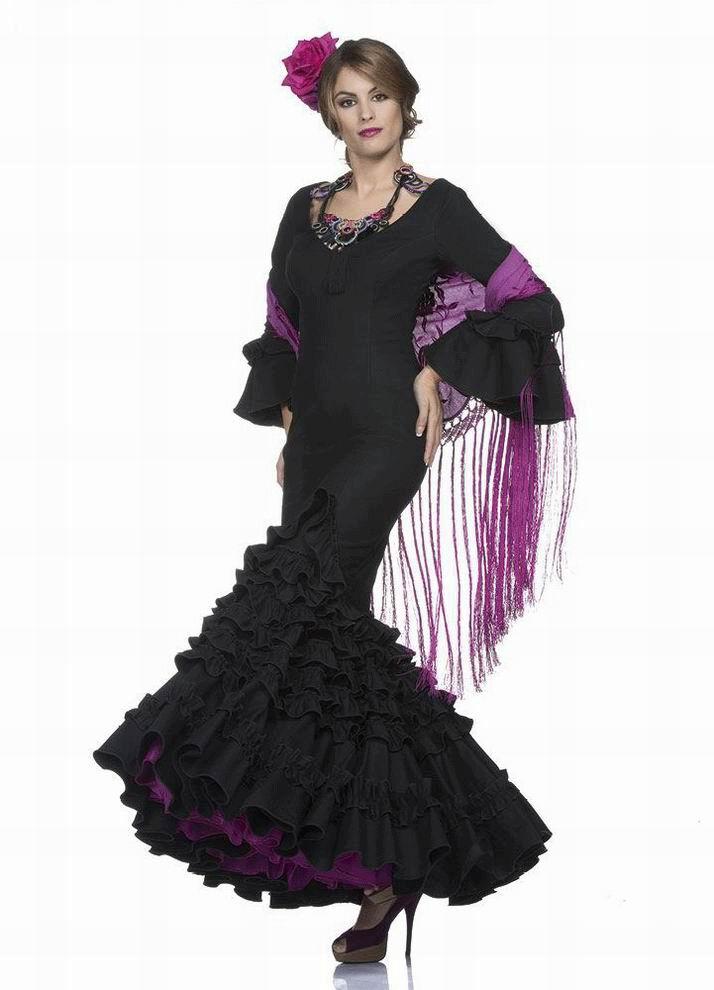
Flamenca dress Eva Negro Model, 2017-2018 collection.
3. SQUARED NECKLINE
Angular neckline that offers a different touch to the typical flamenca dress.
 Flamenca dress Petalo Model, 2017-2018 collection.
Flamenca dress Petalo Model, 2017-2018 collection.
2. HIGH NECKLINE
A dress with a closed neckline can be matched with frills, polka dots designs or any other decorations to compensate the seriousness of the suit.
 Flamenca dress Night Model, 2017-2018 collection.
Flamenca dress Night Model, 2017-2018 collection.
3. HEART SHAPED NECKLINE
It is very flattering for everyone since it is notched at the chest area.
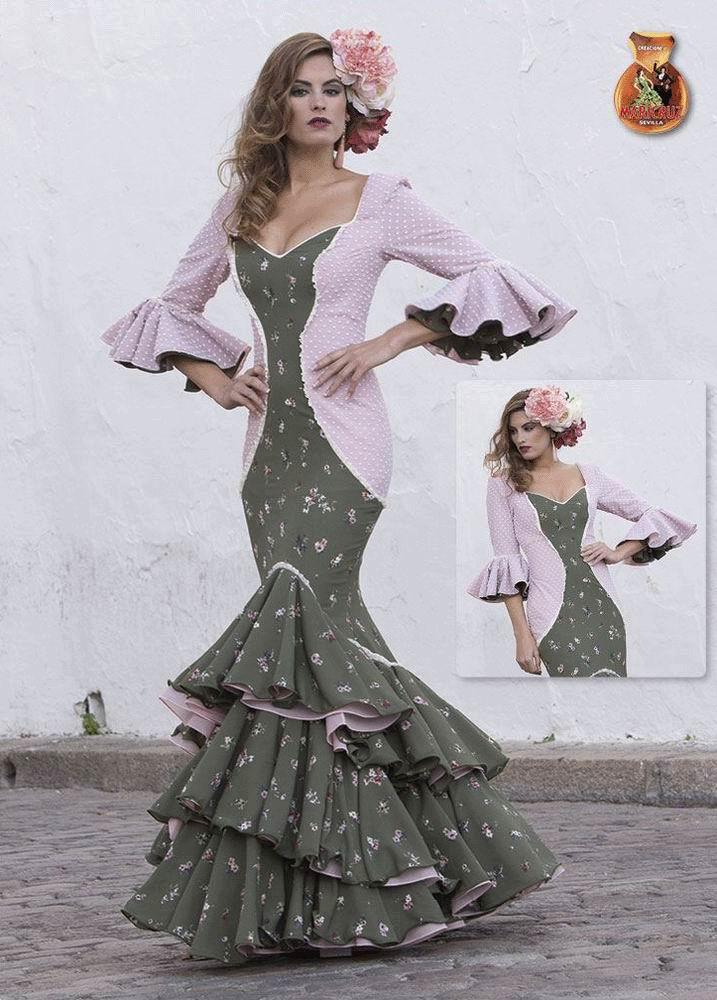
Flamenca dress Elvira Model, 2017-2018 collection.
4. SEE THROUGH HIGH NECKLINE
See through high neckline. Flattering, classic with a modern touch.
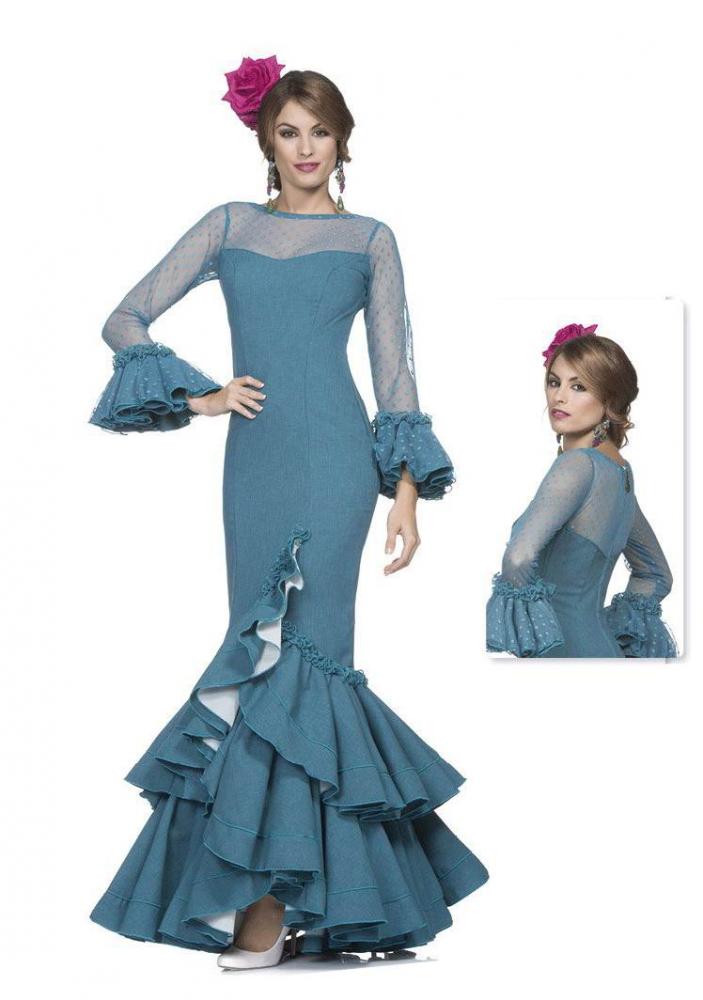 Flamenca dress Luz Model, 2017-2018 collection.
Flamenca dress Luz Model, 2017-2018 collection.
5. SHARP V-NECK
For those who like to be daring, this kinds of dresses have a sharp v-neck that gives the person a sexy touch.
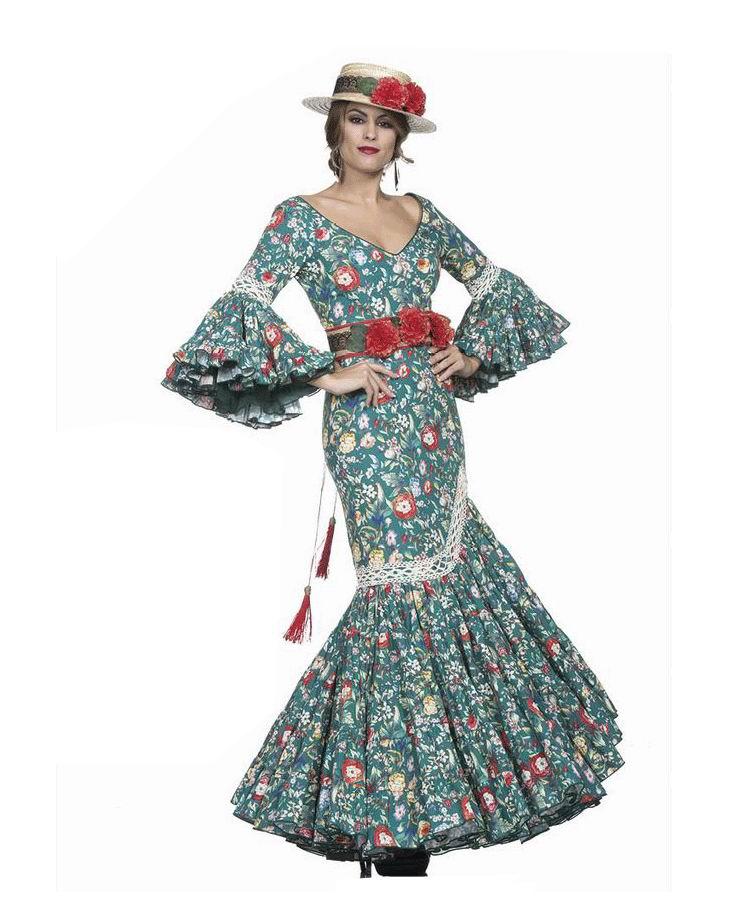
Flamenca dress Jardin Model, 2017-2018 collection.
7. SLEVEELESS NECKLINE
Rounded sleeveless neckline for those hot days or for events like Feria de Abril were people dance, eat and enjoy all day.
 Flamenca dress Clara Model, 2017-2018 collection.
Flamenca dress Clara Model, 2017-2018 collection.
6. HALTER
Daring type of neckline, since this kind of dress leaves the back exposed.
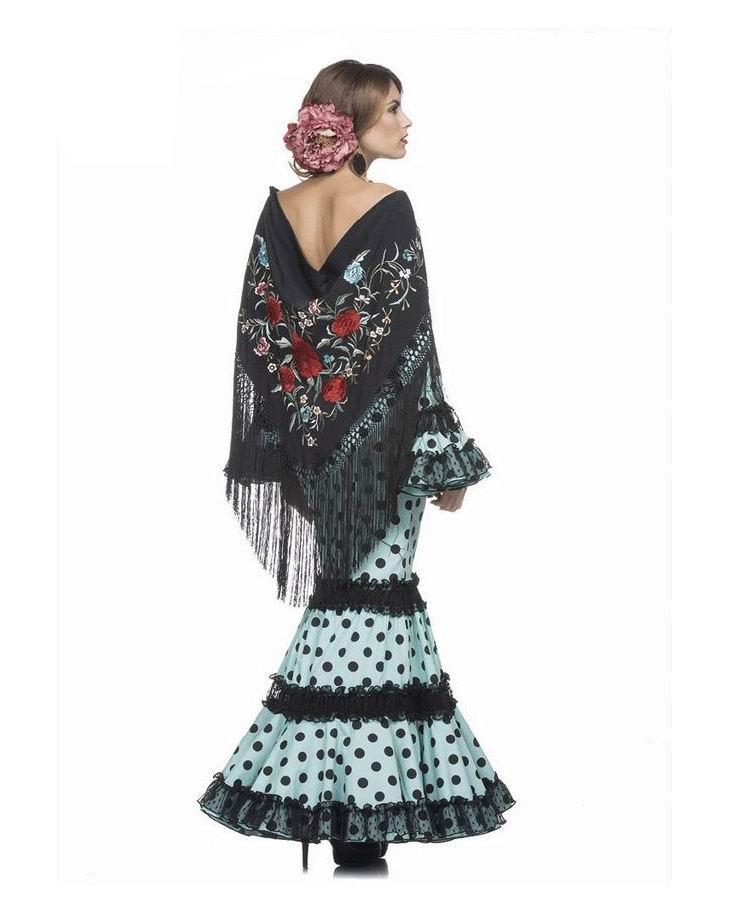 Flamenca dress Canastera Model, 2017-2018 collection.
Flamenca dress Canastera Model, 2017-2018 collection.
The regional costumes or flamenca dresses are clothes in constant evolution. The origin of this attire goes back to the late 19th, early 20th century, but since then it has suffered big changes according to the era and the social situation of each moment in time.
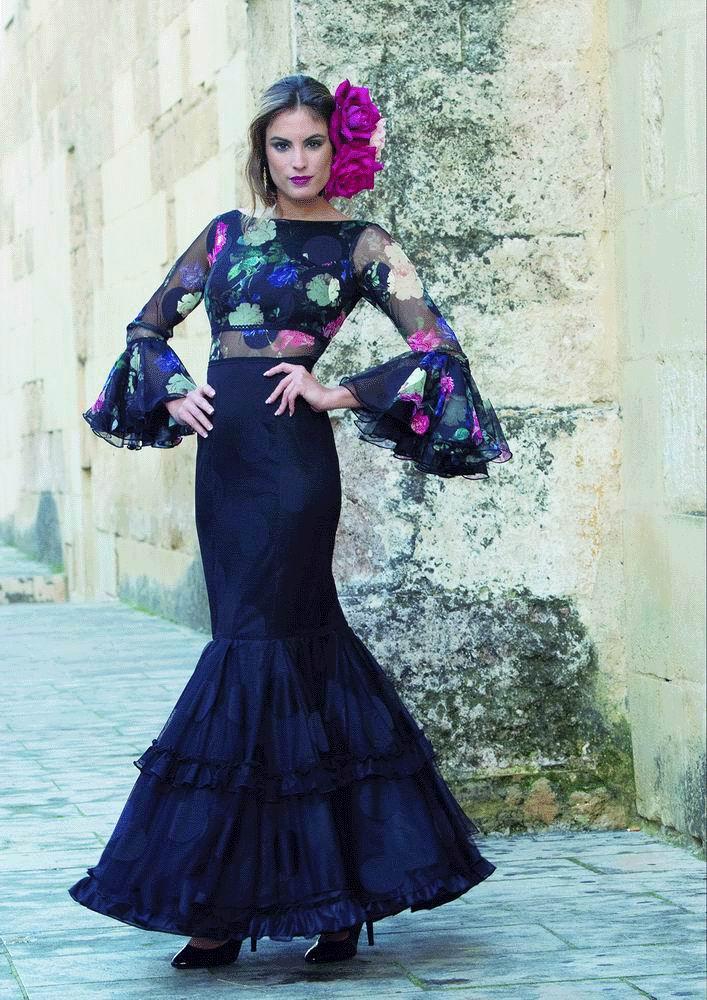
Flamenca dress Dalia model of the 2017-2018 collection from Creaciones Mari Cruz.
The flamenca dress combines tradition and innovation, keeps a basic tailored structure of the body on the hip, and a skirt with frills. However, over time the designer's creativity has flowed and a lot of elements have eventually changed. From the idea of combining colours and designs, to alterations in elements like necklines, sleeves and the use of different materials to make them. Since the 90's, after a decade of over the top dresses with a lot of laces and satin ribbons, they became simpler, without too many ornaments, starch, and hidden hips. Silk cloths, plain colours and polka dots slowly became more used in the new designs. Also, the contour waist and the frills became more popular, and with the arrival of the 21st century they started rescuing materials like poplin, a thin, rigid, heavy and durable cloth that has a fine grooved horizontal look. The dresses, also, began to be manufactured in two pieces and decorated with bigger polka dots.
According to the International Flamenco Fashion Fair, the flamenca dress sector moves more than 120 million euros annually only in exports, with Japan being the country thar receives the most goods. About 65.000 people visited the fair last month, which celebrated 23 years of activity, and in the event 46 designers displayed 1.400 dresses in 32 professional runways. Despite the decrease of the industry during the economical crisis, the flamenco fashion is still weathering the storm well. Specially since, even though there are high quality dresses or designer ones with high prices, it also exists a great variety of them for people who wants something less expensive. The average prices of this costumes are in between 300 or 400 euros and 2000, depending of their quality and exclusivity.
The haute couture industry has also started making space for this products, and highly reknowned designers like Yves Saint Laurent and Victorio & Lucchino have already started their own flamenca dresses clothing line. Also, they have extended this business to the stage and the artists where a lot of unique costumes have been manufactured exclusively for various flamenco dancers. In both environments the main key has always been to mix classic with modern ideas.
On the other hand, the flamenco skirts are a complementary element of this fashion area that also has changed a little bit with time. The most important thing when choosing a skirt for dance is that it has to be comfortable, has to have flight so it can be easily handled, and it has to fit well the person that is using it. Skirts are key for dance academies and schools, and also for all sorts of amateur and professional shows. There are two kinds of basic dancing skirts: the rehearsal and the show ones.
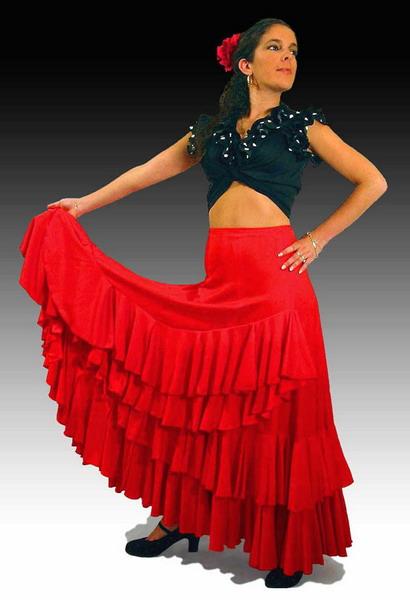
Rehearsal skirt to dance flamenco Rocío model.
The rehearsal skirt tends to be shorter than the one made for stage, and this is because it helps the teacher to watch the students feet while they practice in class. That way, it is easier to correct the mistakes and even the students can look at themselves and know what they are doing wrong. On the other side, the professional skirt is for flamenco dancers who use it for their shows on stage.
As for the skirts main characteristics, the flare will depend on the amount of cloth used to manufacture it as well as the number of keels. The keels are essentially the vertical seams that connect the different parts of the garment. The more keels it includes the more flare the skirt will have. Often this costumes have frills as decorative elements, but there are also those that don't have them. In order for it to fit the dancers figure it is important that the skirt has a lot of flare, and this is achieved with the cloth, godets and frills. Godets are cut fabric pleats added to the lower part of the skirt to give it more flight and weight. Also it is interesting to mention that some models use yoke, which is a superior piece of cloth that adjusts to the hip, from which the skirt part begins.
Even though it is known by everyone, nowadays exists a variety of skirts with different designs, colours, prints and sizes. As and advice, in order to choose a skirt it is better to not select one that uses two plain colours, because the frills can look like they are patches. Instead look for skirts with one colour and polka dots, it will look much better. However, the decision about which one you should choose will depend on your body type as well as the amount and level of activity you are doing. There are skirts for amateurs, semi professionals or professionals. If you are just starting in the flamenco dance you don't really need to spend too much money on a skirt, though the more you dance you will probably look for a better quality one. As in choosing the correct shoes, beyond the design, the most important thing is that your garment is comfortable. In Flamencoexport also, if you want, you can customize them according to your measurments and your personal taste. The biggest advantage of this is that it will we taylor made and it will fit you perfectly. Besides it will be original.
The most common skirts are normally manufactured in flat-knitted fabric, since it is a material that doesn't get damaged as fast, its light and has a lot of flare. The waist is usually elastic, which allows it to fit the body of the dancer, and, depending of the model, some can even come without zipper or brackets. This basically makes much easier to get it fix if needed. It is important, of course, to take good care of the skirts. It has to be appropiately washed and stored. Try not to fold it to not wrinkle it, and if possible, hang it so it doesn't get deformed.
1. Meet some local people
If you meet somebody from the area, not only you will have a local guide but also a host that would help you get inside the private booths, which are the real essence of the fiesta. However, if it is not the case and you don't know anyone, you can also visit any of the 16 public stalls located inside the fair. They all have free entry and, even though the environment inside them is not as authentic, you can still have fun and enjoy the party.
2. The fair starts with a fried fish dinner and the lighting of the entrance
Don't miss any of this two moments. In the spectacular entrance lighting they are used 250.000 light bulbs and it is done at 12.00 at night. Also, this day is called the Fried Fish Monday, because afterwards it is traditional to eat fried fish cooked in the typical andalusian way.
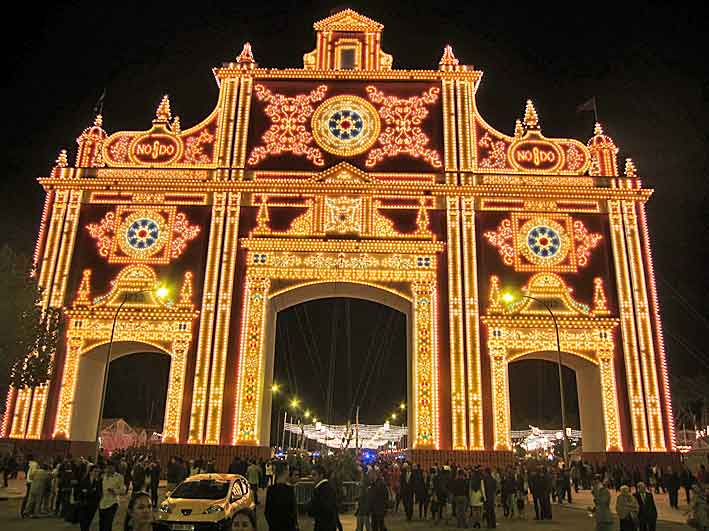
3. Most important days of the fair
The most important days of la Feria de Abril are Tuesday to Thursday. On the weekend a lot of locals travel to the nearest coast to rest and let the foreigners to enjoy their fiesta as well.
4. Dress formally
If it is the first time you go to the event and you don't have a flamenca dress or suit, don't worry. Dress elegant and use accesories like flowers on the hair, shawls, fans, etc, to give yourself a special touch. Never dress casual. The locals are very serious about their fair and the way you dress up its very important.
5. El Rebujito
This is the most typical drink of the fair. It is made with a mix of fino sherry and either 7Up or Sprite. It actually is very refreshing and its good to cool yourself down, but be careful because you can end up really drunk very fast, since its an easy beverage to have.
6. Fireworks
One of the biggest moments of the fair are the fireworkds to close the fiesta on the last day. If you want to watch properly the fireworks castle go to el Muelle de las Delicias, that is the best place for it.

7. Enjoy the days...
For a first time visit, we recommend you to go to the fair during the day and sometime in the middle of the week. You'll enjoy the locals show, their arrivals to the fair riding a horse or in a horse carriage and dressed with the traditional costumes. Also you can see the art of Sevilla and how they dance and party.
8. And nights
After 8.00 pm the fair transforms itself. The drinks start flowing, people claps to the sound of the loud music, the compound is illuminated with thousands of light bulbs and young adults start their personal party.
9. Find a good place to meet
Everybody tends to meet always in the entrance, hence why it always becomes really difficult to find anyone. Choose a different place to meet with friends, like, for example, the door of a specific booth.
10. Learn to dance sevillanas
If you want to inmerse yourself into the actual environment of the fair, learn to dance sevillanas and share some dances with the locals.
11. Find a map
It is actually a really big compound full of booths and streets that are very similar. Find a map of the place, you'll need it to know where you are at all times.
12. Wear comfortable shoes that you do not mind messing with
The floor is covered of albero, a special orange sand that is really effective when it rains but gets your shoes really dirty. Besides, you are gonna walk and dance a lot, so always use comfortable shoes.
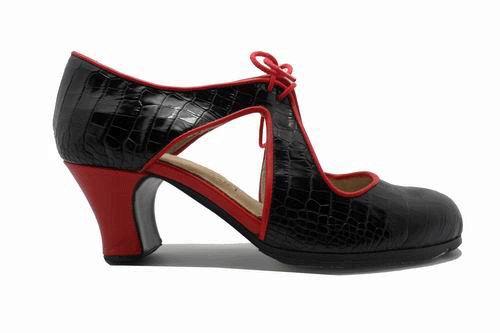
13. Gastronomy
Don't forget to try the andalusian gastronomy, it is incredibly rich. And, of course, taste the rebujito, that will also help you to get your food down.
14. Public transport
The fair has a pretty big parking space but it is never enough, there is always a lot of people that wants to have a place. Use the public transport, you will thank it later. This year, however, be aware because it has been said that there is a possibility of a metro strike during those days. Keep that in mind when choosing how to go to the fair.
15. The things from Hell
That is how the fair rides are called. It is related to the fact that apparently they create such a big amount of noise it always seems like Hell. In fact, that's how the area where the attractions are located its commonly known. Anyway, enjoy the party and the fun rides.
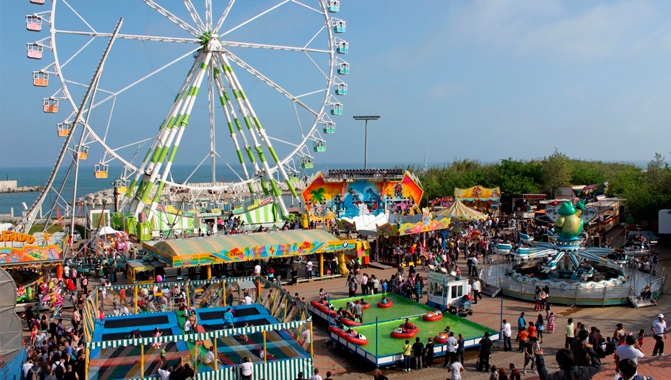
16. Fritters and churros with chocolate
At dawn visit the gypsies booths to try the fritters and hot churros with chocolate. There is not better way to recover from a night of partying.
17. Be careful with pickpockets
It is common sense, but it never hurts to remember that in every place where a lot of people congregates its easier for pickpockets to try and steal things. Watch your stuff at all times and never take out valuable items.
The manila shawls are square silk cloths decorated normally with vibrant colours with flowers, birds, etc, and finished with an exterior border with fringes. Its origins go back to the trade routes created by the spanish Empire with the asiatic continent, more specifically with China and Filipinas. It is from there where the shipments of oriental merchandise used to come, in between those things there were the shawls. Its popularity increased in Spain initially due to the prohibition of the Catholic Monarchs in 1492 of the use of veils. Moor women started, then, to use this oriental shawls to cover their heads and faces.
Originally they were made in large sizes and in silk, and the decorations used to reflect the oriental flora and fauna with chrysanthemums, bamboos, dragons and birds originals from those lands. Over time and with the increment in the spanish demand they started to modify the shawls changing the embroidery with roses and carnations, and in Spain they introduced the fringes, original from the arab culture. This fringes were placed with silk thread and using the macrame and crochet techniques. The typical colours used to be black, white, ivory and red. The manufacture process started with the creation of a paper template in which there were made several perforations. Then, this template was used to create the marks with chalk over the cloth, and afterwards, with the help of a racket, the cloth was carefully embroidered. The work was finished with the placement of the fringes. In order for the shawls to arrive in the best possible condition to their destiny, special cases were manufactured in Filipinas to transport them. Squared boxes with lacqued and golden wood, decorated with mother-of-pearl inlays and chinese decorative motives
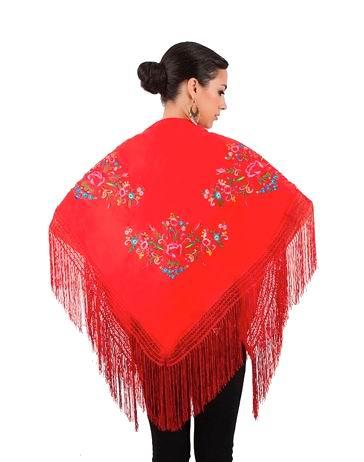
As for the right way of using them, the most common is on top of the shoulders, but also tied on the side or at the height of the hips. And for the proper way of storage them there is an expert way of folding it, though for most people who doesn't know how to do it, it is recommended to hang them in the wardrobe with a plastic cover over it. In case it is needed you can flip it over and gently go over it with the steam iron.
Regarding the types of manila shawls that exist, there are two traditional kinds that can be mentioned. On one hand there are the cigarreros (inmortalized in the Carmen de Bizet opera), decorated with big roses and carnations, embroidered in vibrant colours, with bamboo branches and flowers. On the other hand, there are the isabelinos, whose borders are decorated with flowers but the center part is empty. Each of the flowers that used to decorate the shawl had a special meaning: the violets were related to purity, the daisies to impatience, the roses to secrets and the sunflowers to loyalty.

This way, little by little they became more and more popular until they ended up replacing classic shawls and headscarves in the XIX century. And over time a lot of new workshops began to appear in Sevilla to create their own collections. Also, the flamenco dancers borrowed the idea and integrated it into the dancing. Its use, however, was really complicated due to the fact that only the most expert dancers were able to use them in their dances as if the shawls were an extension of their bodies.
The combs, on the other hand, were feminine ornaments for the hair with a convex body and a group of spikes that fit in the bun. Originally they were manufactured with tortoiseshell, but this days they are mostly made out of synthetic materials. They became traditional in Spain at the end of the XVIII century, and the shawl is often a classic complement for it, since it stylizes women's figure.
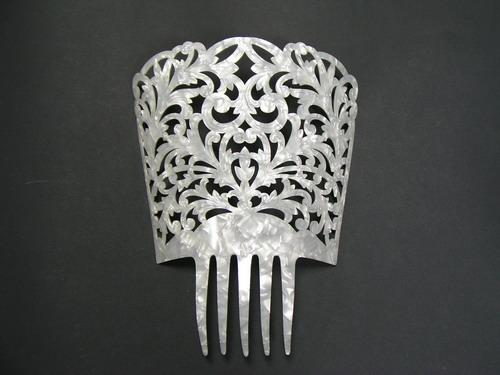
IMPORTANT:
If you are interested in buying any shawls or combs, you can visit our website were we have a huge selection in different colours, styles, etc. This are the best accesories for your flamenca dresses or to acompany your dances on stage.
Flamenco shoes are one of the most important parts no just of the flamenco dance, but also the dress code and the music. The tapping sound of a flamenco dancer its reinforced by this special shoes, since they are a vital part of this style.
The term flamenco shoes normally refers to women shoes, since men generally use boots. This special shoes are particularly important because they are used as percussion instruments to acompany the music. This is like that because they have special nails in the heels and caps of the shoes.
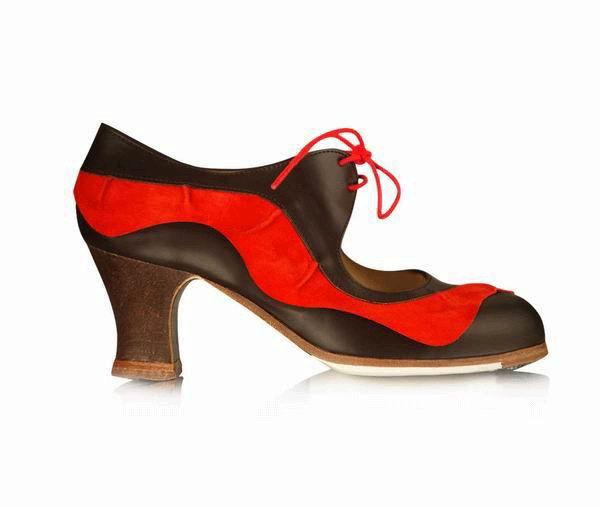
A traditional flamenco shoe tends to be in red or black colours, and normally matches the beautiful dresses. The heel length can vary but usually mesures between 2 and 7 cm. Also this shoes usually have a ribbon or tie that crosses over the foot and is fixed to the ankle, designed to mantain the feet on their place. Depending on the dress, you have to decide what colour and kind of shoes are the best for you.
The shoes can be purchased anywhere in the world, but most professional dancers prefer to ask for theirs to traditional spanish manufacturers that produce handmade and customizable products. The cost of an authentic pair of shoes is not really excesive. Having the right shoes can be a game changer for a dancer, and the ones who dedicate their lives to this know that they have to take care of their feet since their art is really rigourous.
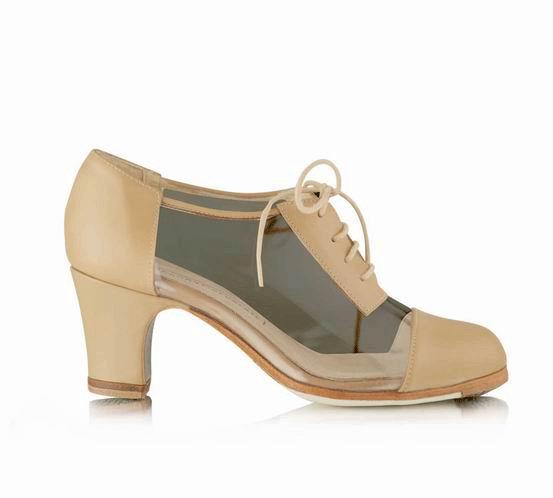
To choose the best flamenco shoe is important to have some things in mind: colour, material (leather, suede, syntethic), the type of heel (standard, reel, cuban), the size of the heel, buckle or ribbons and if you want nails pre-installed or not (often they are sold without nails to practice). Also the quality of the shoes changes depending of the level of the dancer. There are amateur or students shoes, semi-professional, professional, and elite for dancers that have been in the scene for a while.
On the other hand, taking good care of the shoes would prevent them from become stiff. Hence, you should keep them in a fresh and dry environment. After practicing with them let them air dry for several minutes and then bag them so they stay out of the dust and other enviromental elements. Also it is really important to clean and treat the leather by softly brushing and moisturizing it. When the creme gets absorbed then youn can use a shoe polish, and finally afterwards you can wipe it with some cloth or the brush. And, of course, if you use nails on the shoe remember to take them to get changed when there is some missing or worn-out. This way the shoes will last a lot longer.

Some of the most notorious flamenco shoes manufacturers in Spain are:
- Begoña Cervera: this is the leading company in which most of the flamenco professionals trust. It has been working in the artisanal products market for more than a decade, mixing tradition with comfort, design and innovation.
- Gallardo: the shoes of this business are completely handmade in the traditional way. It is a very well reknown brand, recognized by their excellent quality and comfort, and used by a lot of flamenco artists and dance companies. Gallardo also can customize them following the clients wishes.
- Menkes: This prestigious brand uses really modern technology to create their shoes, but they also keep the traditional concept of the artisanal shoes manufacturing process. They guarantee a longevity of the shoes for at least 50 years.
- Roberto Garrudo: he creates handmade shoes with high quality and made with the best materials on the market.
- Bulería Sabates: this spanish shoe enterprise, located in Alicante, is specialized in women's flamenco shoes with original desgins. Their shoes are handmade with really good materials.
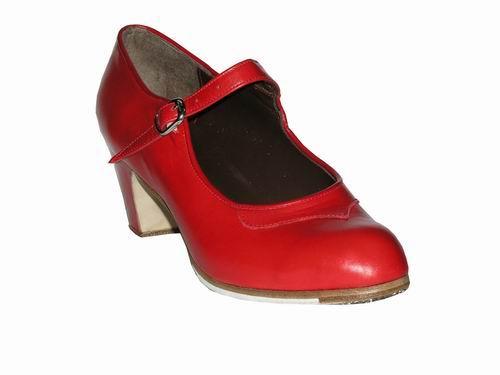
IMPORTANTE:
If you are looking for a pair of good flamenco shoes, please visit our website www.flamencoexport.com. We have a wide variety of them from some of the best brands in the market like Begoña Cervera, Gallardo y Maty. And for those who are looking for something a bit more economic we also have a wide selection of them.








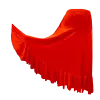
































 Wholesalers/Stockists
Wholesalers/Stockists Contact
Contact



